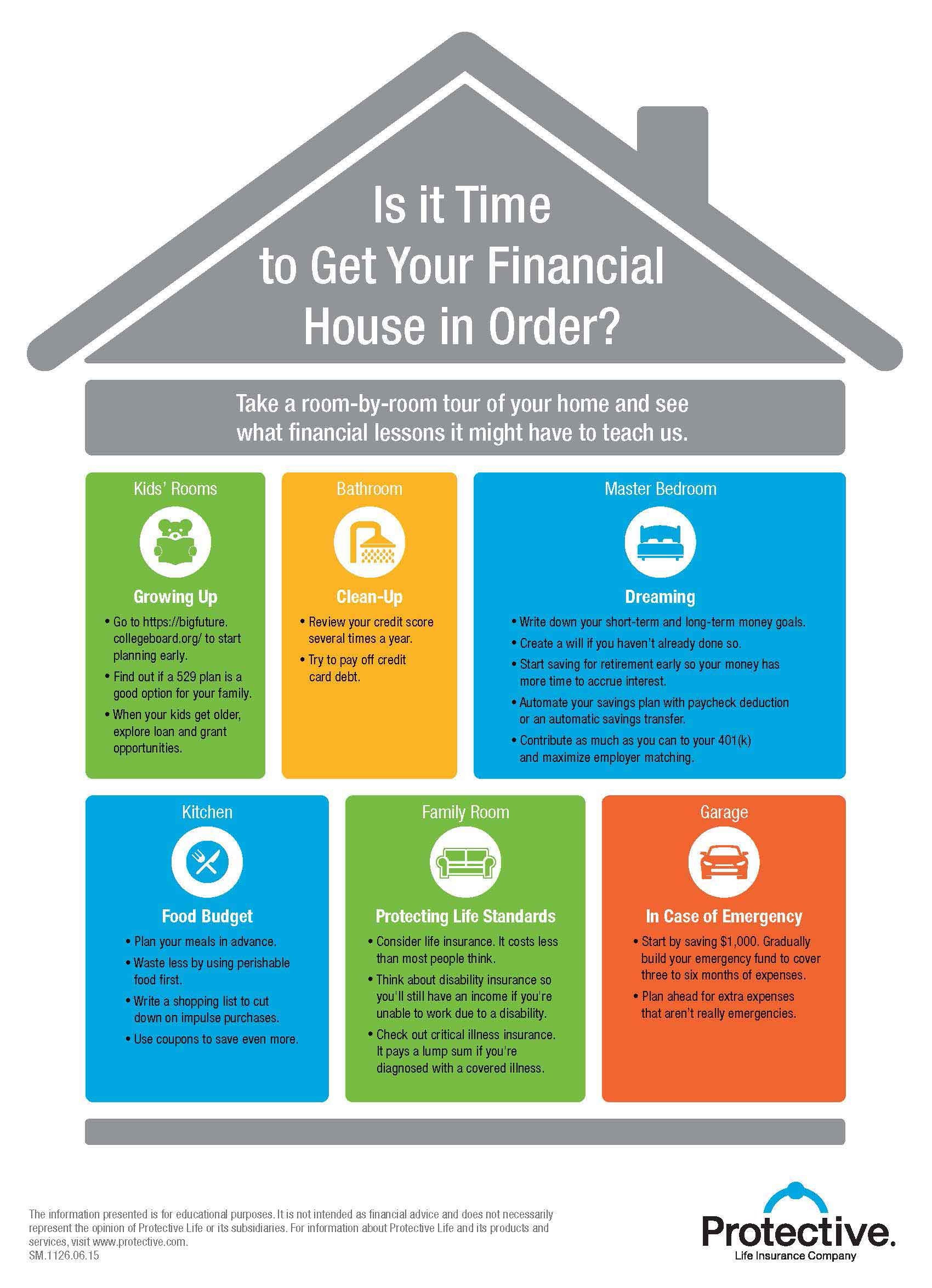Looking to improve your home but not sure how to financially plan for it? We’ve got you covered! Planning for home improvements can be a daunting task, especially when it comes to budgeting and managing your finances. But fear not, because in this article, we will guide you through the process of how to financially plan for home improvements, step by step. From setting a budget to exploring financing options, we’ll provide you with practical tips and strategies to ensure your home improvement dreams become a reality. So, let’s dive right in and learn how to financially plan for home improvements!
How to Financially Plan for Home Improvements
Home improvements can be an exciting and fulfilling endeavor, whether you are remodeling, renovating, or simply upgrading certain aspects of your home. However, without proper financial planning, these projects can quickly become overwhelming and potentially lead to financial strain. In this guide, we will explore effective strategies to help you financially plan for your home improvements, ensuring that you can successfully complete your projects within your budget and without unnecessary stress.
1. Assess Your Home Improvement Needs
Before diving into the financial planning process, it’s crucial to assess and prioritize your home improvement needs. This step will help you determine which projects are essential and which ones can be postponed or even eliminated from your list. Consider the following aspects:
– Identify areas of your home that require urgent attention or repairs.
– Evaluate your living situation and determine if any improvements are necessary to enhance your comfort or address specific needs.
– Consider the potential return on investment (ROI) for each improvement. Certain projects, such as kitchen renovations or bathroom upgrades, tend to have a higher ROI compared to others.
1.1 Establish Your Home Improvement Goals
Once you have identified your needs, establish clear goals for your home improvement projects. Having a vision will help you stay focused and avoid unnecessary expenses. Consider the following questions:
– What is the purpose of the project? Is it to improve functionality, increase energy efficiency, enhance aesthetics, or a combination?
– What is your desired outcome? How do you envision your home after the improvements are complete?
– Are there specific features or elements you want to incorporate into your project?
2. Set a Realistic Budget
Creating a realistic budget is the cornerstone of effective financial planning for home improvements. By setting a budget, you can avoid overspending and ensure that your project remains financially feasible. Follow these steps to set a realistic budget:
2.1 Research Project Costs
Start by researching the potential costs of your home improvement projects. Gather information from various sources, including contractor estimates, home improvement stores, and online resources. Consider the following factors when estimating costs:
– Materials: Determine the cost of materials required for your project, such as lumber, paint, fixtures, appliances, etc.
– Labor: If you plan to hire professionals, obtain multiple quotes from contractors.
– Permits and fees: Research any necessary permits or fees associated with your project.
– Contingency fund: Set aside a portion of your budget as a contingency fund to account for any unexpected expenses that may arise during the project.
2.2 Calculate Your Available Funds
Next, assess your available funds to understand how much you can allocate to your home improvement projects. Consider the following sources of funds:
– Savings: Determine how much you have in your savings account and how much you are willing to allocate to your projects.
– Home equity: If you have substantial home equity, consider options such as a home equity loan or a home equity line of credit (HELOC) to finance your improvements.
– Personal loans: Research personal loan options that can provide you with the necessary funds at a reasonable interest rate.
– Credit cards: Depending on the project size and your credit limit, using credit cards for certain expenses may be an option. However, be cautious of high-interest rates and ensure that you can pay off the balance quickly.
2.3 Prioritize Your Projects within Your Budget
After estimating project costs and assessing available funds, prioritize your projects based on their importance and your budget limitations. Decide which projects you can realistically undertake within your financial means. It may be necessary to adjust your goals or consider alternative options to stay within your budget while still achieving satisfactory results.
3. Consider Financing Options
If your available funds are insufficient to cover the entire cost of your home improvements, you might need to explore financing options to bridge the gap. Here are a few common options to consider:
3.1 Home Equity Loans
A home equity loan allows you to borrow against the equity you have built in your home. It provides a lump sum of money that you can repay over a fixed term at a fixed interest rate. Home equity loans often have lower interest rates compared to other borrowing options, making them an attractive choice for financing home improvements.
3.2 Home Equity Line of Credit (HELOC)
A HELOC functions similarly to a credit card, providing a line of credit that you can draw from as needed. The interest rate is typically variable, and you only pay interest on the amount you borrow. HELOCs offer flexibility, allowing you to borrow and repay multiple times during the draw period, usually 5-10 years.
3.3 Personal Loans
Personal loans are unsecured loans that can be used for a variety of purposes, including home improvements. They typically have fixed interest rates, and repayment terms can vary. Shop around for the best interest rates and terms to ensure the loan aligns with your financial goals.
3.4 Credit Cards
Credit cards can be a convenient option for financing smaller home improvement projects. However, be cautious of high-interest rates and make sure you have a plan to pay off the balance in a timely manner.
4. Research and Obtain Multiple Quotes
When it comes to hiring professionals for your home improvement projects, it’s essential to research and obtain multiple quotes. This will help you compare prices, services, and credentials, ensuring that you choose the best option that fits within your budget.
4.1 Research Contractors and Service Providers
Take the time to research and gather information about contractors and service providers in your area. Consider the following factors:
– Experience: Look for contractors with a proven track record in the specific type of project you have.
– Reviews and references: Read online reviews and ask for references from previous clients to assess the quality of their work.
– Licensing and insurance: Ensure that any contractors you consider are properly licensed and insured.
– Price estimates: Request detailed price estimates from multiple contractors to compare costs.
4.2 Evaluate Quotes and Assess Your Budget
Once you have obtained quotes from multiple contractors, carefully evaluate them to determine which one aligns best with your budget. Consider not only the price but also the quality of materials, services included, and the estimated project timeline.
4.3 Negotiate and Finalize Contracts
If your preferred contractor is slightly above your budget, consider negotiating to see if they can adjust their quote or offer any additional benefits. Once you have reached an agreement, ensure that the contract is detailed, covering all aspects of the project, payment terms, and warranties.
5. Create a Project Timeline
A project timeline will help you stay organized and ensure that your home improvement projects progress smoothly. Consider the following steps when creating your timeline:
5.1 Break Down the Project into Phases
Divide your project into manageable phases to better understand the timeframe required for each step. This breakdown will help prevent delays and ensure a realistic schedule.
5.2 Set Realistic Deadlines
Assign deadlines for each phase of your project, considering factors such as the availability of contractors, delivery of materials, and any additional work required. Be realistic about the time needed for each task to avoid unnecessary stress and setbacks.
5.3 Account for Contingencies
Include buffer time in your timeline to account for unexpected delays or challenges that might arise during the project. This contingency will help you stay on track even if unforeseen circumstances occur.
By following these steps and implementing effective financial planning strategies, you can embark on your home improvement projects with confidence. Remember to assess your needs, set a realistic budget, explore financing options, research and obtain multiple quotes, and create a project timeline. With careful planning and consideration, you can transform your home while ensuring financial stability along the way.
How Do I Financially Plan for Home Renovations?
Frequently Asked Questions
Frequently Asked Questions (FAQs)
1. How can I financially plan for home improvements?
When it comes to financially planning for home improvements, it’s essential to start by setting a budget. Evaluate your current financial situation and determine how much you can allocate towards your home improvement project. Research the costs involved, get quotes from contractors, and prioritize your renovations based on your budget and needs.
2. What are some ways to save money on home improvements?
To save money on home improvements, consider DIY projects for tasks you can handle yourself. Compare prices from different suppliers and contractors to get the best deals. Additionally, look out for sales, discounts, and special offers on materials. Repurposing or refurbishing existing items in your home can also be a cost-effective way to enhance your living space.
3. Should I consider taking out a loan for my home improvements?
Whether or not to take out a loan for home improvements depends on your financial situation and goals. If you have enough savings, it might be preferable to use those funds instead of borrowing. However, if you need to carry out major renovations and don’t have sufficient savings, a loan could be a viable option. Explore different loan options, compare interest rates, and ensure you can comfortably manage the repayment terms.
4. How do I prioritize home improvements within my budget?
Prioritizing home improvements within a budget involves assessing the urgency and impact of each project. Start by addressing any critical maintenance or repair issues to prevent further damage. Next, focus on enhancements that add value or improve functionality, such as kitchen or bathroom upgrades. Consider long-term benefits and costs when deciding on the order of your renovations.
5. Are there any financial incentives or grants available for home improvements?
Yes, there may be financial incentives or grants available for certain types of home improvements. Research government programs, local initiatives, or utility company rebates that offer financial assistance for energy-efficient upgrades or renovations aimed at improving accessibility. Ensure you meet the eligibility criteria and follow the application process to access these incentives.
6. How can I estimate the overall cost of my home improvement project?
Estimating the overall cost of a home improvement project involves considering various factors. Get detailed quotes from contractors, including labor and material costs. Add any additional expenses such as permits, inspections, or architectural fees. It’s also wise to account for unexpected expenses or contingencies by setting aside a portion of your budget for unforeseen circumstances.
7. Can I negotiate prices with contractors for home improvements?
Yes, it’s often possible to negotiate prices with contractors for home improvements. Obtain multiple quotes from different contractors and use them as leverage for negotiation. Discuss the scope of work, materials to be used, and any potential cost-saving alternatives. Make sure to clarify all terms and conditions in writing before finalizing any agreement.
8. What are some alternative funding options for home improvements?
If traditional loans are not feasible or desirable, there are alternative funding options available for home improvements. These include home equity lines of credit (HELOCs), personal loans, or credit cards with low-interest rates. Carefully consider the terms, interest rates, and repayment terms of each option to determine the best fit for your financial situation.
Final Thoughts
Home improvements can be a significant financial investment, but with proper planning, it is possible to manage the costs effectively. Start by setting a realistic budget and identifying the areas of your home that need improvement. Research the potential costs involved and consider getting multiple quotes from contractors. Don’t forget to allocate funds for unexpected expenses and prioritize your projects based on urgency and affordability. Look for financing options like home improvement loans or lines of credit if needed. By creating a financial plan and sticking to it, you can successfully navigate the expenses involved in home improvements. So, when it comes to financially planning for home improvements, thoughtful budgeting and research are key.



